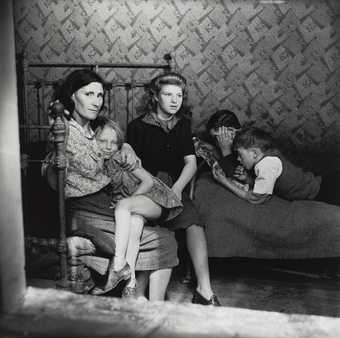This room presents a selection of photographs by Edith Tudor-Hart and her younger brother Wolfgang Suschitzky
Originally from Vienna, Tudor-Hart (née Suschitzky) and Suschitzky made key contributions to documentary photography and film in mid-20th century Britain.
Edith and Wolfgang came from a non-religious Jewish family. Their parents were freethinkers and pacifists who taught their children socialist values. Their father was a Viennese bookseller. Following therise of fascism in Austria in the 1930s, Jews and socialists faced persecution, and both siblings left Vienna. Edith arrived in Britain in 1933 and her brother joined her in 1935.
From a young age, Edith’s political beliefs were shaped by her direct experience of social inequality. In the 1920s, her strong socialist views developed into communism. These beliefs led her to become anagent for the Soviet Union. She continued to live this double life until t h e 1950 s .
Certain themes reappear throughout Edith’s photography. They include the well-being of children, and the daily lives of working communities. Wolfgang was also aware of social divisions but his photography was more poetic than his sister’s. His carefully composed and illuminated images show an affection for the city in which he found freedom and safety.
Curated by Kate Bush
Tate Britain

